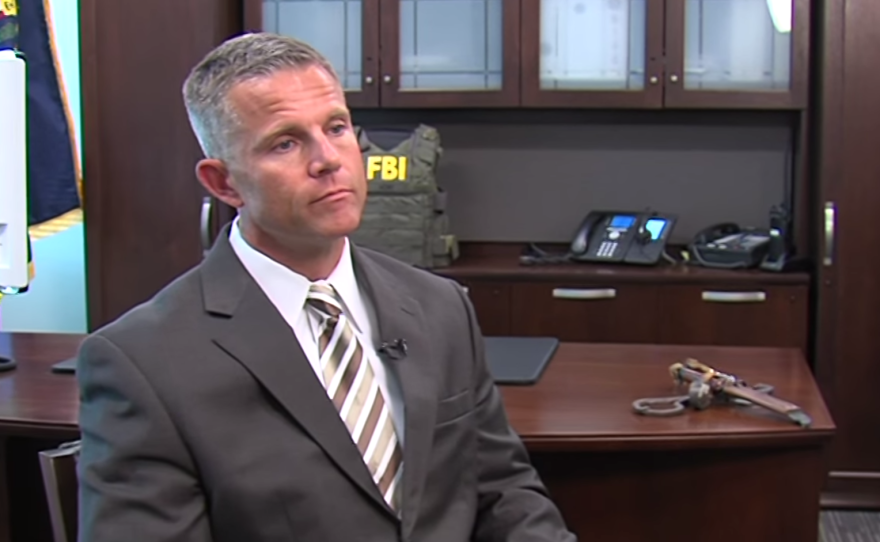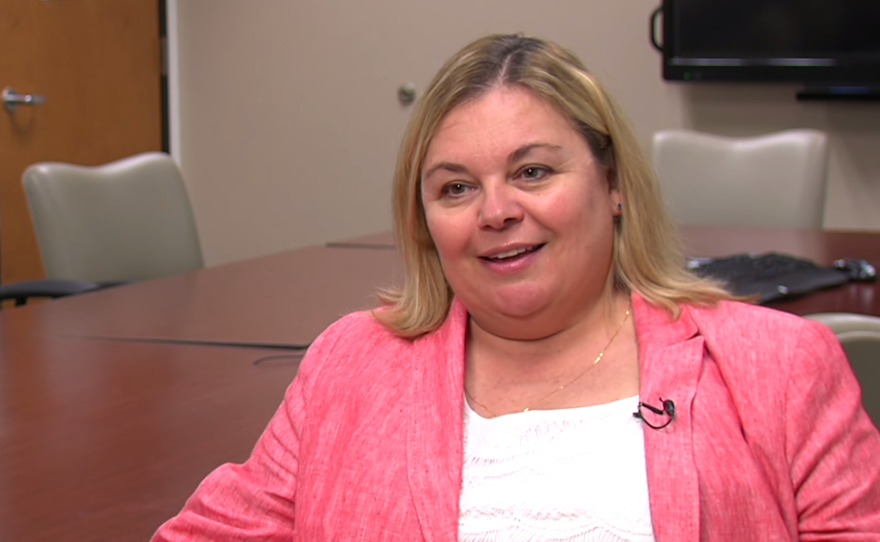Jill, not her real name because she fears retribution, said she rose to the top of her pimp’s list of prostitutes because she was an asset.
On a recent morning, the blonde 32-year-old with tough blue eyes spoke with a mix of pride and sorrow about turning tricks.
“All the pimps I dealt with made it very clear to everyone that I was the baddest bitch out there,” Jill said. “I knew how to get money. I knew how to manipulate the Johns into paying me whatever I wanted them to pay me.”
But Jill never saw the approximately $2,500 she said she earned per day from having sex with five to seven men.
”Everything went into his bank account,” she said, referring to her pimp. “I didn’t care because I was high. Now looking back today, it’s like, 'Goddamn! I could have been rich right now.’”
The pimp acknowledged Jill’s worth by delegating his work to her. He recruited the girls. She trained them.
“I took them to neighborhoods,” she said. “I told them what to do in terms of, ‘Don’t flag no one down. You got to walk back and forth. You got to make circles.’ I gave them their start and end point.”
Women, such as Jill, who help pimps sell girls are called "bottoms." They serve as enforcers who still turn tricks but reap none of the profits and are used to shield pimps from police scrutiny.
“The bottom is the most down for the pimp — which 'down' being a good word — so she’d be the bottom because she’s the most down,” said Mary Ellen Barrett, a San Diego County deputy district attorney.
There are no hard numbers on how prevalent sex trafficking is in San Diego. But since 2011, law enforcement officials have busted three significant trafficking rings across the county involving gang members pimping out girls as young as 12.
Statistics are also nonexistent on how many bottoms there are in the county. But Barrett said they’re beginning to see more women involved in the logistical end of pimping in larger gangs.
“We’re trying to cut the head off the snake, so we’re seeing it more,” Barrett said.
Jill said she became a "bottom" in 2011.
She said her pimp preyed on girls who needed money for food, clothes or drugs. She regrets her role in turning the girls into sex trafficking victims.
“It hurt me in a lot of ways because some of these girls were not even old enough to understand what it was to be a prostitute,” she said. “I look back in my mind to when I was 11 or 12 years old and my mom was doing the same thing to me, and I wished that I could turn back the hands of time.”
Jill said her mother first sexually trafficked her when she was 11, in exchange for drugs. Jill eventually made it to the bottom position after years of working with different pimps.

FBI Agent Robert Howe called that track a path of endurance.
“A bottom is typically a young lady who has survived through the victimization of prostitution as a minor for a number of years and graduated into a position of responsibility for a male who is referred to as a pimp but in reality is a violent pedophile,” Howe said.
Pimps use bottoms to insulate themselves from police scrutiny. As a result, Howe said, many of the women take on management of the girls, overseeing financial transactions and recruitment.
Barrett said many bottoms are particularly effective at luring in new girls by befriending them at continuation schools, bus and trolley stops, and shopping malls. They can also be brutal enforcers of pimps’ rules, making it tough for the criminal justice system to dole out punishment.
“Often times, the female pimps and traffickers were themselves victims,” said Summer Stephan, a San Diego County deputy district attorney. “That’s a factor that makes it very complex because at one point is the person still a victim or a perpetrator?”
Getting a bottom to turn on her pimp is another challenge prosecutors face.
”They’re in a family,” Barrett said. “They have someone who cares for them. They have someone who provides for them. They have someone who beats them less than the stepfather they left at home.”
Still, Barrett said most bottoms have limits.
“Bringing in a 16-year-old is tolerable,” Barrett said. “Bringing in a 12-year-old is not. Beating is OK, but breaking bones is not. Denying food is fine, but not to the baby. And that’s when they seek help.”
Jill said it took a long time for her to reach that point because she was often high on methamphetamine and crack cocaine. It didn’t happen after the dozens of arrests. It didn’t happen after her son was taken away from her. Nor did it happen after she said two pimps kidnapped and beat her for two days straight causing her to miscarry twins.
“Deep down inside I was dying,” Jill said. “I wanted out and I didn’t know how. I felt like I was just a walking piece of meat.”
Jill reached her threshold 18 months ago when she was pregnant with her daughter.
“Six weeks before she was born, I quit everything,” Jill said. “I quit drugs. ... I quit spending my days in hotels. I quit having contact with drug dealers, and I moved into a homeless shelter and got myself together.”
Today, Jill holds down three jobs, including one as a mentor to troubled teens.








